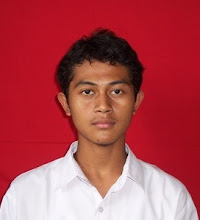History of Karate
Okinawa
- See also: Okinawan martial arts
Karate began as a common fighting system known as "ti" (or "te") among the pechin class of the Ryukyuans. After trade relationships were established with the Ming dynasty of China by Chuzan King Satto in 1372, many forms of Chinese martial arts were introduced to the Ryukyu Islands by the visitors from China, particularly Fujian Province. A group of 36 Chinese families moved to Okinawa around 1392 for the purpose of cultural exchange and shared their knowledge of the Chinese martial arts. The political centralization of Okinawa by King Shohashi in 1429 and the 'Policy of Banning Weapons,' enforced in Okinawa after the invasion of the Shimazu clan in 1609, are also factors that furthered the development of unarmed combat techniques in Okinawa.[2]
There were few formal styles of ti, but rather many practitioners with their own methods. One surviving example is the Motobu-ryu school passed down from the Motobu family by Seikichi Uehara.[4] Early styles of karate are often generalized as Shuri-te, Naha-te, and Tomari-te, named after the three cities from which they emerged.[5] Each area and its teachers had particular kata, techniques, and principles that distinguished their local version of ti from the others.
Members of the Okinawan upper classes were sent to China regularly to study various political and practical disciplines. The incorporation of empty-handed Chinese wu shu into Okinawan martial arts occurred partly because of these exchanges. Traditional karate kata bear a strong resemblance to the forms found in Fujian martial arts such as Fujian White Crane, Five Ancestors, and Gangrou-quan (Hard Soft Fist; pronounced "Gōjūken" in Japanese).[6] Further influence came from Southeast Asia— particularly Sumatra, Java, and Melaka. Many Okinawan weapons such as the sai, tonfa, and nunchaku may have originated in and around Southeast Asia.
Sakukawa Kanga (1782–1838) had studied pugilism and staff (bo) fighting in China (according to one legend, under the guidance of Kosokun, originator of kusanku kata). In 1806 he started teaching a fighting art in the city of Shuri that he called "Tudi Sakukawa," which meant "Sakukawa of China Hand." This was the first known recorded reference to the art of "Tudi," written as 唐手. Around the 1820s Sakukawa's most significant student Matsumura Sokon (1809–1899) taught a synthesis of te (Shuri-te and Tomari-te) and Shaolin (Chinese 少林) styles. Matsumura's style would later become the Shorin-ryū style.
Matsumura taught his art to Itosu Ankō (1831–1915) among others. Itosu adapted two forms he had learned from Matsumara. These are kusanku and chiang nan. He created the ping'an forms ("heian" or "pinan" in Japanese) which are simplified kata for beginning students. In 1901 Itosu helped to get karate introduced into Okinawa's public schools. These forms were taught to children at the elementary school level. Itosu's influence in karate is broad. The forms he created are common across nearly all styles of karate. His students became some of the most well known karate masters, including Gichin Funakoshi, Kenwa Mabuni, and Choki Motobu. Itosu is sometimes referred to as "the Grandfather of Modern Karate."[7]
In 1881 Higaonna Kanryo returned from China after years of instruction with Ryu Ryu Ko and founded what would become Naha-te. One of his students was the founder of Goju-ryu, Chojun Miyagi. Chojun Miyagi taught such well-known karateka as Seko Higa (who also trained with Higaonna), Meitoku Yagi, Miyazato Ei'ichi, and Seikichi Toguchi.
In addition to the three early ti styles of karate a fourth Okinawan influence is that of Kanbun Uechi (1877–1948). At the age of 20 he went to Fuzhou in Fujian Province, China, to escape Japanese military conscription. While there he studied under Shushiwa. He was a leading figure of Chinese Nanpa Shorin-ken at that time.[8] He later developed his own style of Uechi-ryu karate based on the Sanchin, Seisan, and Sanseiryu kata that he had studied in China.[9]



